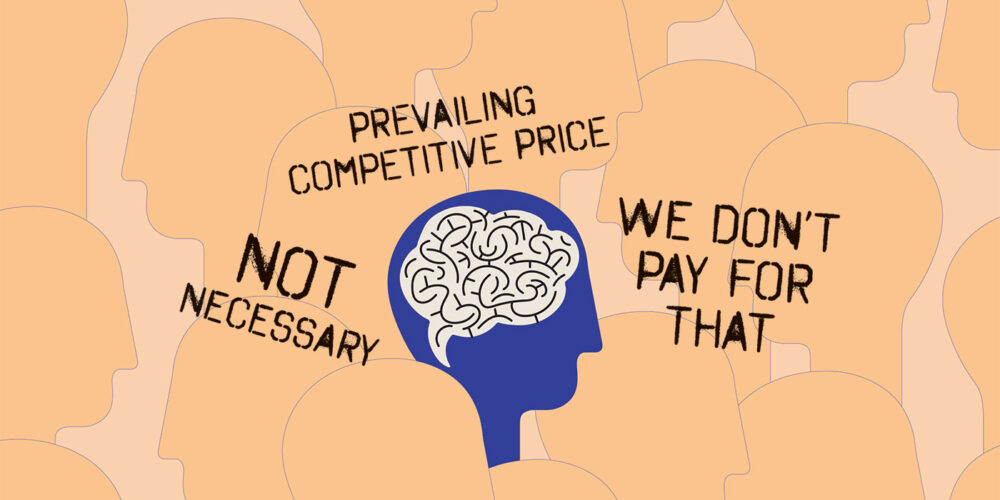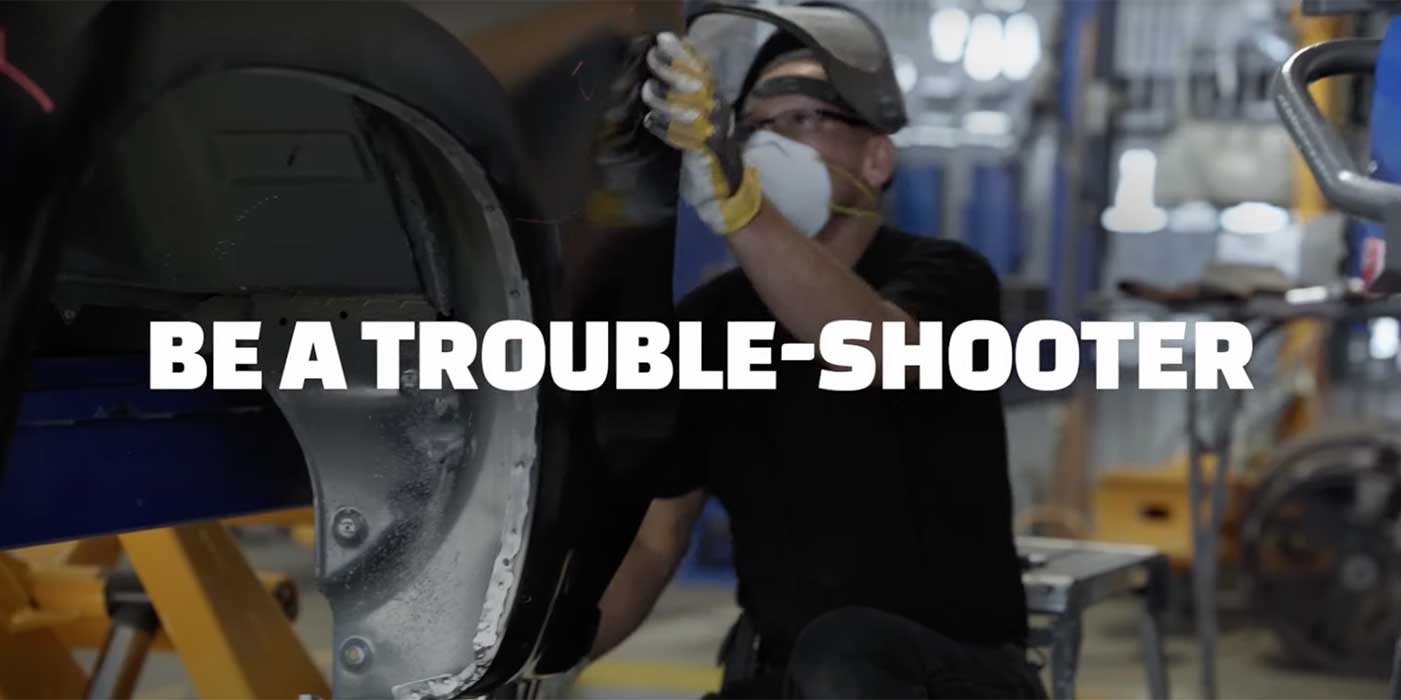I’ve been in or around the collision industry for over a half a century now. I was born and raised in the collision industry and worked in my family’s body shop in Alaska until joining the Air Force. I’ve also managed and owned my own shops and served as a consultant to other shops. During this time, I’ve seen and heard almost too many crazy terms to list.
Teardown
One example is when we say “nice hit” when a good job comes in on a rollback, or when we use the term “tear down” when talking about dismantling a vehicle. Who wants their car torn down? We know we’re referring to our trained, experienced and certified technicians carefully removing damaged components to ascertain the full extent of the sustained damage, but the vehicle owners likely do not. Insurers often use this term too because the claims rep comes from the repair industry or aims to slight the collision repair industry.
Can you imagine what goes through vehicle owners’ heads when they hear what is about to happen to their beloved mechanical family members? It reminds me of the old transmission repair company commercial showing two chimpanzees banging on a transmission with clubs. Not a good image for repairers or the collision repair industry! It would be much more accurate and acceptable to use the term “dismantle” instead of tear down.
Prevailing Competitive Price
Another term used is prevailing competitive pricing (PCP). Who in their right mind would suggest that all repairers should charge the same labor and material rates in their market area regardless of the level of service and quality they provide? Can you imagine a certified, high-quality shop charging the same as a low-value, high-volume “Shake-N-Bake” shop? And should the Shake-N-Bake shop charge the same rates as the high-end certified shop? If that were legitimate, all insurers should charge the same premiums regardless of the policyholder’s driving record or year, make and model of vehicle. Imagine if all auto dealers charged the PCP for their automobiles regardless of the make and model, where a Kia Soul would sell for the same median price as a Mercedes-Benz!
We Don’t Pay For That
How about things we hear from insurers like, “We don’t pay for that.” Well, I have news for you: Insurers do not pay repairers for the services you provide (unless it’s the insurer’s vehicle). Insurers are obligated to provide the necessary funds to the vehicle owner … and independent (non-DRP) repairers would do well to ensure all payments made by the insurer do not include the repairer’s name. This is recommended to avoid any suggestion that there is some contractual relationship between the repairer and insurer and to keep it an “arm’s length transaction.” Repairers must see their customers for who they are: people who are relying on them to make them as whole as possible once again. The only role the insurer has in such situations is to provide repairers with the needed funds to do so.
Not Necessary
“Not necessary” is another popular statement by insurers. In an industry rife with potential liabilities, every repairer should be accessing OEM repair guidelines and following them to a T whenever possible … or have a very well-documented reason as to why they didn’t or couldn’t. Having the insurer merely tell you “it’s not necessary” will not hold up in a wrongful death or injury trial where you’re called upon and asked by the prosecuting attorney in front of a judge and jury of your peers, “Why didn’t you follow the manufacturer’s guidelines?” Is your excuse going to be, “Because the insurer said it wasn’t necessary,” or “The insurer wouldn’t pay for it”? How do you think that will end?

We have a perfect example in the John Eagle case, where the repairer used this lame defense and the insurer was excused once it explained its position of: We don’t make repairs — we just pay for them, and we fully expect all repairs to be done properly and thoroughly.” John Eagle Collision shouldered the responsibility to the tune of $32 million.
Copies of Invoices
“We need copies of your invoices!” No repairer is obligated to reveal its internal documentation to anyone by mere request or demand, and there is no viable or legitimate reason as to why you should do so (unless by subpoena). First of all, you’re an independent business that maintains and safeguards its internal and proprietary information. An insurer has no more right to demand such information than you do to demand their customer’s underwriting file.
So what could an insurer need your invoices for?
- To prove you actually bought the listed parts and that you’re not a thief and a liar. Well, who’s to say someone couldn’t buy the parts, get an invoice and then return them for a refund? Invoices provide no proof that the parts were actually used in the repair. Therefore, there’s no need for them to have your invoices. If the insurer wants to verify the acquisition and use of the parts once finished and paid for, it can perform a post-repair inspection and see for itself. Consider that, generally speaking, the customer is not obligated to have repairs performed and is still entitled to full consideration for the full costs of repair … whether he or she has the vehicle repaired or not. As such, an insurer cannot and should not withhold or condition payment until the repairer provides its invoices. Consider too that there are likely no policy provisions/mandates that state or suggest that repairs must be made, and all repair-related documents must be provided to the insurer — especially true in claims against a third-party.
- To verify pricing of the parts or services. The insurer doesn’t need a repairer’s documentation for this; it can contact a parts supplier and ask the current manufacturer’s suggested retail pricing (MSRP) for each part. Since the insurer owes the customer for the cost of repairs (not the shop), insurers have no need for or any right to the repairer’s internal documents that lay out its costs or discounts. In most states, the only “invoice” a repairer is obligated to provide to its customer is the repairer’s final company invoice.
As I see it, with no legitimate reason or viable need for insurers to demand repairers’ invoices, the only conclusion is that it is an effort for insurers to show dominance over repairers … who they don’t possess and can’t take.
Note: While not obligated to do so, if my customers ever had a wish to see my internal invoices, as a courtesy to them, I would sit down and show them each invoice. However, I would not allow customers to copy or photograph them.
Summary
These are just a few of the crazy things repairers have to deal with, and there are plenty more but space prevents me from listing them.
The bottom line is that all this can be changed … but only when repairers choose to step up and make the needed changes in their shops, take control of their industry and learn to operate their businesses as effectively as insurers and other business professionals operate theirs.
Time is Money
According to a recent “Who Pays for What?” survey (CollisionAdvice.com), more than one-third of shops (39%) itemize on invoices the diagnostic labor time they spend researching diagnostic trouble codes (DTCs) apart from the charge for the vehicle scan itself. It’s unclear if this fee is assessed after the repair to verify all is as it should be or if done at the onset of damage diagnoses “as it should be” in most instances.
We’ve all heard that “time is money.” The collision repair industry is based on time and money. I recently asked one of my attorney clients, “If you were engaged to handle a matter for a client that you were not familiar with and therefore needed to do research, would you charge for the time it took to do this?” He replied that he most definitely would assess fees for the time incurred. He went on to state that if it was a matter he dealt with in the past and was familiar with the issues at dispute and the laws and statutes pertaining to them, he would not need to do the additional research and as such would not charge additional fees.














